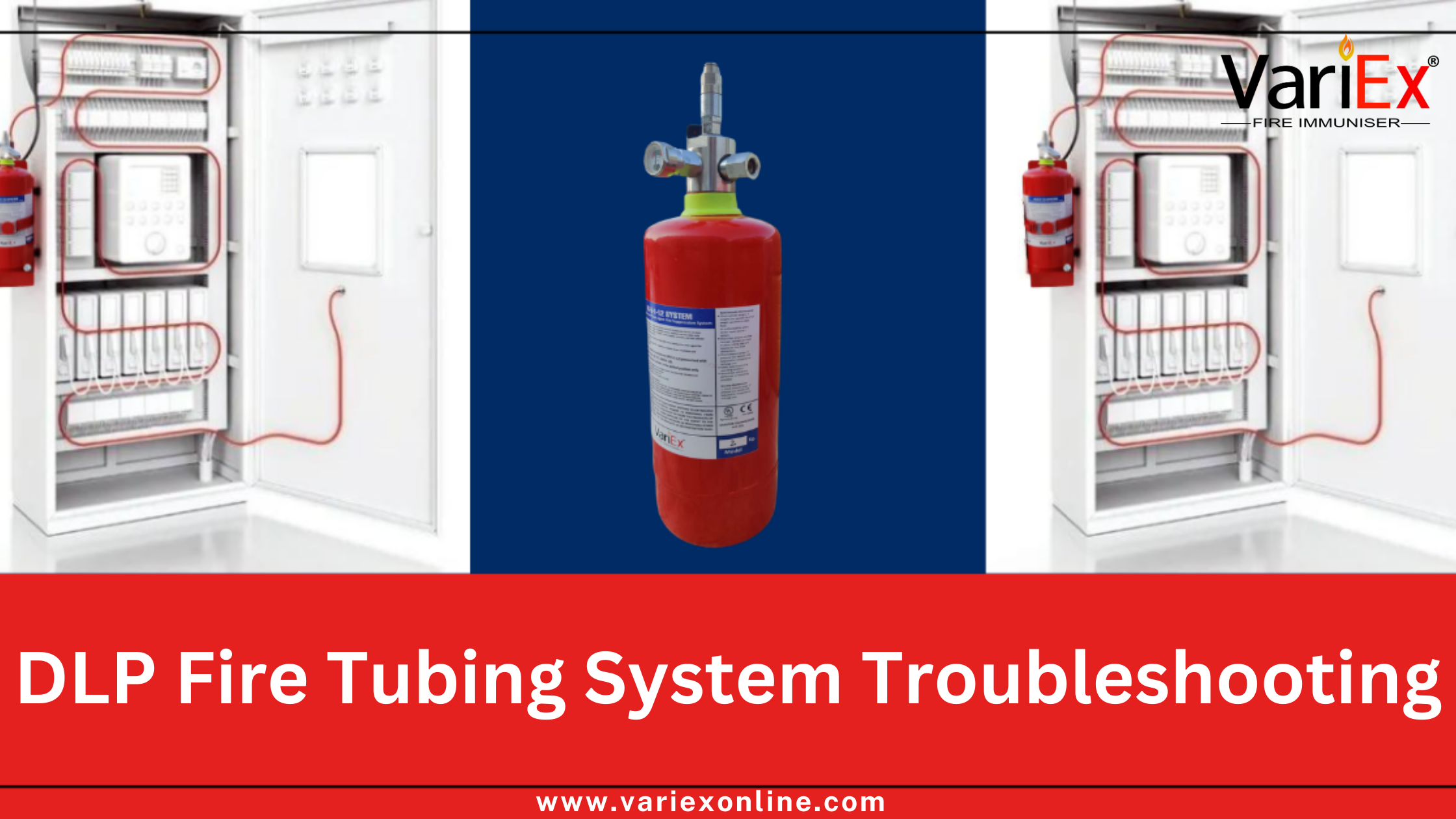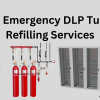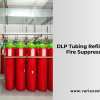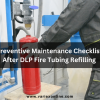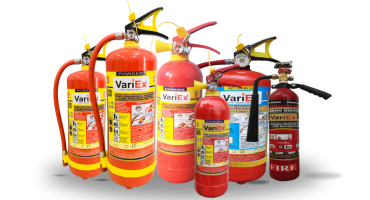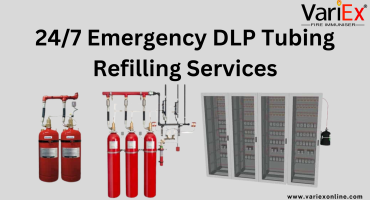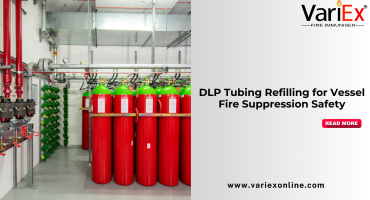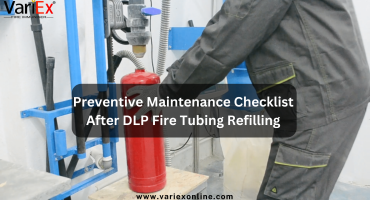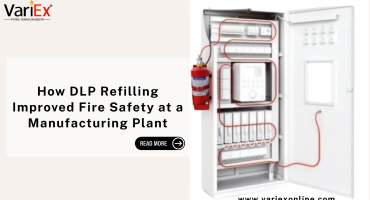![]()
Fire Immuniser
+91-7829629111
Email: info@variex.in
Varistor Technologies Pvt. Ltd.
Block-1, First Floor, Ardente Office One, Hoodi Circle, ITPL Main Road, Bengaluru, Karnataka 560048, IN
DLP Fire Tubing System Troubleshooting
DLP Fire Tubing System Troubleshooting
In today's high-risk environments—such as server rooms, manufacturing plants, and control panels—DLP fire tubing systems offer a compact and automatic fire suppression solution. However, even the most robust systems can run into issues over time. That’s where effective troubleshooting comes in.
Proper DLP fire tubing system troubleshooting is crucial to avoid system failures, prevent property damage, and ensure the safety of lives and equipment. In this guide, we’ll explore the most common problems, how to identify them, and what steps to take for resolution.
What Is a DLP Fire Tubing System?
A DLP (Direct Low Pressure) fire tubing system is a fire suppression method that uses pressurized flexible tubing to detect and extinguish fires at the source. When heat from a fire causes the tubing to burst, it releases a fire suppressant agent directly onto the affected area.
These systems are ideal for confined spaces where traditional sprinklers or extinguishers are impractical.
Why Troubleshooting Is Critical
Just like any other safety system, your DLP fire suppression system requires routine checks and prompt troubleshooting to remain effective. Neglecting system warnings or signs of malfunction can lead to:
-
Delayed fire response
-
False activations
-
Regulatory non-compliance
-
Catastrophic equipment damage
Regular troubleshooting is not just maintenance—it’s a preventive measure that could save lives.
Common Problems in DLP Fire Tubing Systems
There are several symptoms that may indicate issues in your DLP system:
-
Cylinder pressure drops unexpectedly
-
Tubing bursts without a fire present
-
System fails to activate during a fire event
-
No suppressant discharge after activation
-
Sensor or alert malfunctions
-
Tubing discoloration or physical wear
Identifying the root cause is the first step toward resolving the problem and restoring full fire safety functionality.
Troubleshooting Table for DLP Fire Tubing Systems
Here’s a detailed troubleshooting table that covers common issues, their likely causes, and recommended solutions:
| Problem | Possible Cause | Recommended Solution |
|---|---|---|
| Sudden pressure drop | Micro-leak or tubing pinhole | Conduct a pressure decay test and replace damaged tubing |
| No suppressant discharge upon burst | Clogged nozzle or valve malfunction | Clean or replace nozzle; test and possibly replace valve |
| Tubing fails to burst during fire | Tubing routed too far from heat source | Reassess routing and ensure it follows installation guidelines |
| False activation | High ambient temperature or poor installation | Relocate tubing away from heat-emitting equipment |
| Frequent pressure loss | Loose fittings or valve wear | Tighten connections, inspect and replace faulty valves |
| Discolored or brittle tubing | UV exposure or chemical degradation | Replace tubing and add UV shielding or proper casing |
| Alarm triggered but no agent release | Sensor failure or wiring fault | Test sensor function, check wiring connections |
How to Visually Inspect the System
A basic monthly visual inspection can help identify issues before they become critical. Look out for:
-
Bubbling, cracking, or discoloration in the tubing
-
Dust or blockage on nozzles
-
Rust on metallic connectors
-
Cylinder gauge readings below manufacturer recommendations
-
Signs of tampering or physical damage
Using a flashlight and mirror can help inspect hidden tubing routed inside cabinets or equipment.
Diagnosing Pressure-Related Issues
One of the most frequent problems is a drop in system pressure. Here’s how to check:
-
Attach a calibrated pressure gauge.
-
Perform a pressure decay test.
-
Compare the results against the expected pressure range.
-
Isolate the leak using a soap-and-water solution to spot bubbles.
If the tubing or connectors are at fault, immediate replacement or tightening is necessary.
Tubing Doesn’t Burst in a Fire Event
This issue is often due to poor system layout. Tubing must be routed through high-risk zones to ensure exposure to fire. If it’s installed too far from the ignition point, it won’t reach the activation temperature.
Always follow manufacturer-specific layout recommendations and use heat-mapping tools to verify tubing placement in sensitive zones.
No Suppressant Released on Activation
If the tubing bursts but no suppressant is released, the issue could lie in:
-
A blocked or dirty nozzle
-
A malfunctioning valve
-
An under-pressurized cylinder
These components must be tested during annual servicing. In emergencies, immediate replacement or servicing is required.
Preventing False Activations
False discharges are a major inconvenience, often caused by:
-
Tubing placed near ovens, motors, or exhaust vents
-
High ambient temperatures during summer months
-
Electrical shorts or sensor calibration issues
Solutions include rerouting the tubing, installing heat shields, and regularly testing all sensors.
What to Do After a Discharge
Whether accidental or due to an actual fire, here’s how to safely restore the system:
-
Replace the burst tubing with new, certified material.
-
Refill the suppressant cylinder with the correct agent.
-
Test the pressure and connections.
-
Update your system logs with service and test dates.
Skipping any of these steps compromises future reliability and may result in non-compliance with local safety regulations.
Electrical Integration Issues
Some DLP systems are integrated with fire alarms, control panels, or automated shutdown systems. If an alert triggers but no activation follows, check:
-
Alarm output relays
-
Sensor feedback loops
-
Low-voltage power connections
-
Interface board functionality
Troubleshooting these parts often requires a qualified technician or electrician.
When to Call in a Fire Safety Professional
While some basic troubleshooting and inspections can be done in-house, certain problems demand certified expertise. Call a professional if:
-
Pressure loss continues even after tubing replacement
-
System activation fails during a test
-
Multiple false activations occur
-
Any damage is found that you cannot safely repair
Hiring a trained technician also helps maintain fire safety compliance.
Routine Maintenance Checklist
Keep your system in top shape with this simple checklist:
-
Weekly visual inspection
-
Monthly pressure gauge check
-
Quarterly nozzle and sensor tests
-
Annual professional servicing
-
Post-incident recharge and retesting
Record all maintenance in a dedicated logbook for safety audits.
Conclusion:
A DLP fire tubing system is a smart and efficient way to protect vital infrastructure. But to ensure it responds during a fire event, regular troubleshooting and preventive maintenance are a must.
By understanding the most common problems—and how to solve them—you ensure that your safety system performs exactly when needed. From visual checks to full system refills, every step counts in your fire protection strategy.
If you're unsure about any part of the system, don’t risk it. Call in a certified fire suppression expert for inspection and service.
Frequently Asked Questions
Visual inspections should be done monthly, with professional servicing at least once per year.
No, refilling must be done by a certified technician to ensure safety and compliance.
Usually, it’s because the tubing is too close to a non-fire heat source like motors or exhausts.
Micro-leaks or tiny pinholes may be invisible. Use a pressure decay test to identify the issue.
Yes. Discoloration can indicate UV or chemical damage. Tubing should be replaced immediately.
Final Say
At VariEx.in and VariexOnline.com, we specialize in supplying and installing top-quality fire fighting systems and equipment. From fire extinguishers to advanced suppression systems, we offer comprehensive solutions tailored to your needs. Our experienced team ensures precise installation and maintenance for optimal safety.
Trust VariEx for reliable fire protection. Contact us online or call 7829629111 to learn more.
We specialize in manufacturing, supplying, and distributing a comprehensive range of fire fighting equipment, including state-of-the-art fire extinguishers. Read our most searched blogs and find interesting information on topics such as how to use a fire extinguisher, how to calculate fire fighting water tank capacity, fire extinguisher refilling, obtaining a Fire NOC, understanding fire fighting systems, types of fire protection systems, the fire hydrant system, and the fire sprinkler system. These resources provide essential knowledge for ensuring safety and compliance with fire safety regulations. Additionally, you can explore guides on the maintenance of fire protection equipment, the latest advancements in fire safety technology, and best practices for fire risk assessment and management.
Our expertise extends to fire alarm systems, fire hydrant systems, and fire suppression systems, including fire sprinklers. Each product meets rigorous international standards for reliability and performance, ensuring effective fire safety products tailored to diverse applications and industries. Additionally, we are providing Fire Extinguisher Refilling and AMC services to ensure ongoing maintenance and operational readiness of fire safety equipment.


